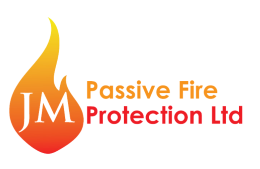Structural steelwork protection is essential for ensuring the durability, safety, and longevity of steel structures. It involves applying various protective measures to prevent or reduce degradation due to environmental factors, especially corrosion and fire. There are two main types of structural steelwork protection: corrosion protection and fire protection.
1. Corrosion Protection
Steel is prone to corrosion when exposed to the atmosphere, especially in environments with high humidity, salts, or pollutants. Corrosion weakens the steel, compromising the structural integrity of buildings, bridges, and other structures. To prevent this, several methods can be employed:
Protective Coatings
- Paint Systems: Steel can be coated with different layers of paints that act as a barrier to moisture and corrosive elements.
- Primer Coat: Usually a zinc-rich coating to protect against rust.
- Intermediate Coat: Provides additional thickness for enhanced protection.
- Topcoat: Protects against UV light, weathering, and wear.
- Galvanization: Steel is dipped in molten zinc to form a corrosion-resistant layer. This is common for outdoor steel structures like fences, poles, and industrial equipment.
- Powder Coating: Electrostatic application of powdered paint, which is then cured under heat. It forms a hard, durable layer on steel surfaces.
- Metallic Coatings: This involves coating steel with other metals (such as zinc, aluminum, or zinc-aluminum alloys) through processes like hot-dip galvanizing or thermal spraying.
Cathodic Protection
Cathodic protection is a technique used to control the corrosion of steel by making it the cathode of an electrochemical cell. This can be done in two ways:
- Sacrificial Anodes: Another metal, such as magnesium or zinc, is attached to the steel. These metals corrode in place of the steel.
- Impressed Current: An external power source supplies a small electric current to the steel, preventing corrosion.
2. Fire Protection
In the event of a fire, steel loses strength rapidly when it reaches high temperatures, compromising the load-bearing capacity of the structure. Fire protection aims to delay this effect, providing time for evacuation and firefighting efforts. The main fire protection methods for structural steelwork are:
Passive Fire Protection
- Intumescent Coatings: These are paint-like coatings that expand when exposed to heat, creating a thick, insulating layer that protects the steel from high temperatures. The expansion reduces heat transfer to the steel, maintaining its strength longer in a fire.
- Cementitious Coatings: A lightweight, spray-applied cement-based material that provides thermal insulation to the steel. It’s thicker than intumescent coatings and is often used in industrial settings.
- Boarding or Fire-Resistant Cladding: Fire-resistant boards or cladding materials can be attached around the steel members to protect them from heat exposure.
Active Fire Protection
- Water-Based Systems: These systems involve water sprinklers, deluge systems, or mist systems designed to cool the steel by spraying water during a fire, thus slowing down the heating of the steelwork.
- Fire-Resistant Encasement: The steel structure can be enclosed in fire-resistant materials like concrete, which provides excellent thermal insulation.
Considerations for Steelwork Protection
- Environment: The choice of protection method depends on the exposure conditions. Coastal or industrial areas may require more robust corrosion protection due to salty or polluted atmospheres.
- Aesthetics: Protective coatings, especially intumescent paints and powder coatings, are available in different colors to match the design intent.
- Maintenance: Steel structures need to be inspected and maintained periodically. Corrosion protection coatings may need touch-ups, and fire protection materials need to remain intact for effectiveness.
Standards and Regulations
In many countries, specific standards and regulations govern the protection of structural steelwork:
- BS EN ISO 12944 (for corrosion protection)
- BS 476, EN 13381, and UL 263 (for fire protection performance)
- Local building codes that stipulate fire ratings and requirements for certain structures (e.g., 30, 60, 90-minute fire resistance).
By applying the appropriate protection systems, structural steel can maintain its strength, integrity, and appearance, ensuring safety and longevity in various environments and conditions.
